Samsung Galaxy S20 Ultra camera review: overwhelmed by new possibilities
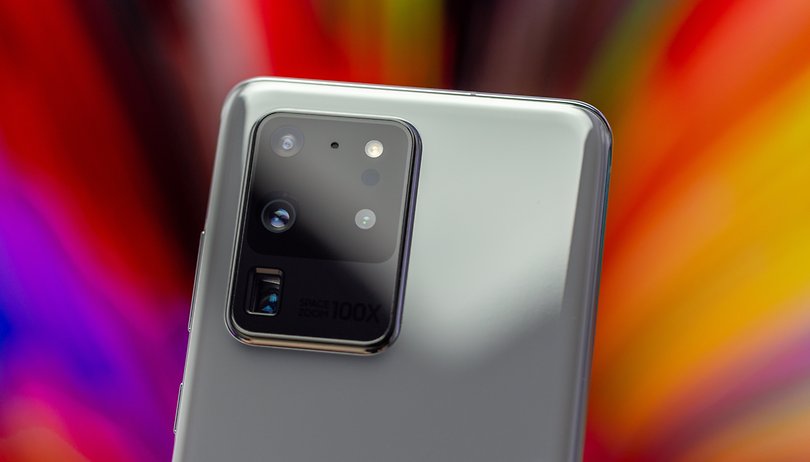

A resolution of 108 megapixels on a rarely seen image sensor that is unheard of for mobile phones: the Samsung Isocell Bright HMX set new standards, at least on paper. After the Xiaomi Mi Note 10 (Pro), an improved version of the 1/1.33-inch chip called HM1 is now also used in a smartphone from Samsung itself: the Galaxy S20 Ultra 5G.
With the Xiaomi Mi Note 10, I have taken thousands and thousands of photos. It was the only camera I had in Indonesia, in Andalusia and over Christmas and New Year's Eve. The result is a lot of great photos that I would not have thought possible with a smartphone just a few years ago.
But a painful portion of the photos were also broken. From double images to missed subjects due to endless waiting times between each 108-megapixel photo to photographic total breakdowns. My relationship with Mi Note 10 is complicated. It felt like 'the image sensor of tomorrow in today's smartphone with yesterday's software'.
So is the Samsung Galaxy S20 Ultra the new smartphone of tomorrow - or at least the best one of today?
Technical specifications
The heart of the camera unit is Samsung's Isocell Bright HM1. In contrast to the Bright HMX from the Mi Note 10, this sensor combines not four but nine pixels into one "superpixel" in everyday use. Instead of Tetracell, the marketing department calls it Nonacell. Accordingly, the standard resolution of the Galaxy S20 Ultra is not 27, but only 12 megapixels.

Above the 108-megapixel main sensor, Samsung installs an ultra-wide-angle module. The chip's native resolution is 12 megapixels and the field of view is one of the widest in current smartphones, at 120 degrees. This is really great for panoramic photos or short distances to the subject.
The lowest of the three camera modules finally looks into the distance - and around the corner. Behind the periscope construction, with five times the optical magnification of the main camera, sits the well-known 48 megapixel Sony IMX586 sensor, a definitely above-average configuration for a telephoto camera.
On paper, the Samsung Galaxy S20 Ultra probably has the best prerequisites of all current smartphones.
Cameras in the Samsung Galaxy S20 Ultra
| Ultra-wide-angle camera | 13 mm | 12 megapixels | 1/2.55 inch | F2.2 | unknown |
| Main camera | 26 mm | 108 megapixels | 1/1.3 inch | F1.8 | Isocell Bright HM1 |
| Telephoto zoom camera | 102 mm | 48 megapixels. | 1/2.0 inch | F3.5 | Sony IMX586 |
| Selfie camera | 26 mm | 40 megapixels | 1/2.65 inch | F2.2 | Isocell Bright GH1 |
Main camera performance
The main camera in the Samsung Galaxy S20 Ultra 5G always shoots nice photos with great detail reproduction. The 12-megapixel shots are already pleasingly detailed but are naturally surpassed by the 108-megapixel shots. The difference is only noticeable at high detail magnifications and is not as extreme as I would have expected. In a direct comparison with the 108-megapixel images of the Mi Note 10, the detail reproduction of the S20 Ultra is a bit better.
In everyday use, you can easily be satisfied with the S20 Ultra's 2 to 6 MB 12-megapixel images. In comparison, the 108-megapixel images take up around 30MB per image, but the hardware, which is more powerful than the Mi Note 10, including the version with Samsung's own Exynos 990 SoC, ensures that you can still take a few snapshots in 108-megapixel mode.
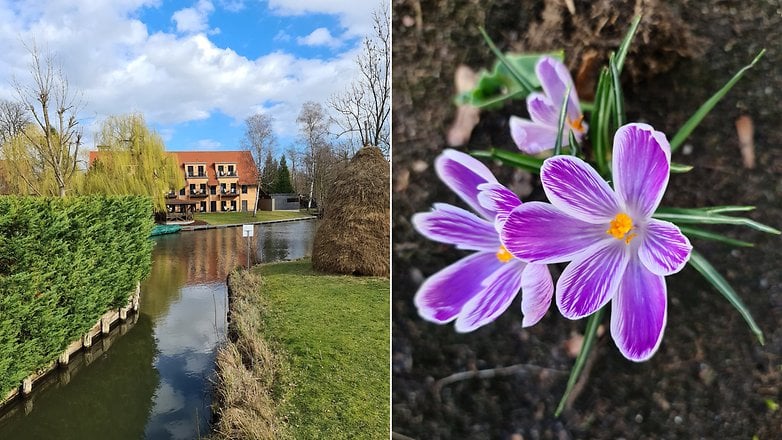
Under optimal lighting conditions, the pictures are rich in detail and show beautiful, though sometimes painfully vivid colors. But that's what we're used to from Samsung, and when it comes to high-contrast shots, disappointment quickly sets in. The HDR automatic does not fire reliably even with high differences in brightness between landscape and sky. Then the images turn out dull, with underexposed trees and burnt-out clouds. Unfortunately, this happens more often than would be tolerable on a $1,399 smartphone.
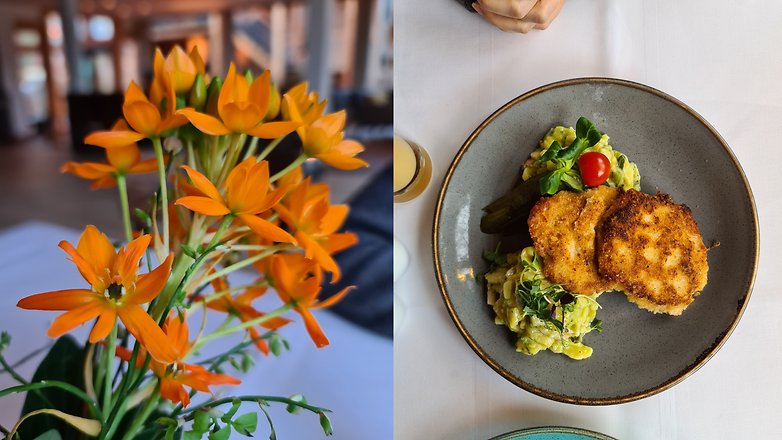
Unfortunately, the white balance is not always reliable. In daylight, the images tend to be a little cold. Unfortunately, the S20 Ultra also has to struggle with mixtures of artificial light and daylight, so it likes to play 'blue hour' during the day.
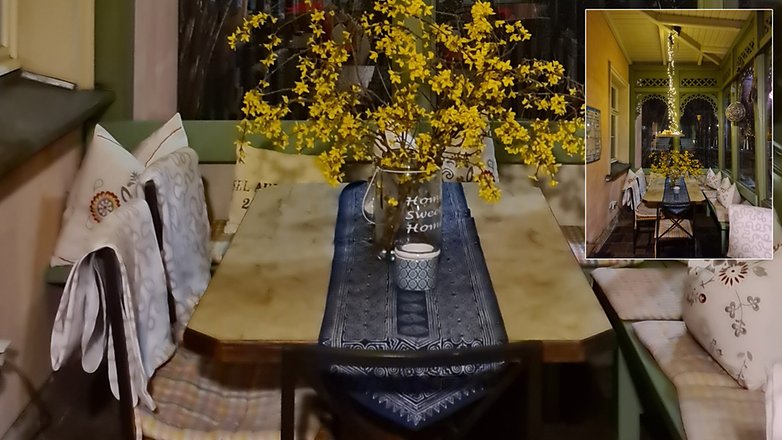
In bad lighting conditions it becomes confusing. While the detail rendition is partly impressive, the noise reduction is much too aggressive - monochrome surfaces appear as clumsy and soft like the first face retouching attempts of aspiring lifestyle influencers. Especially with blatantly sharply accentuated details right next to it, it simply looks unnatural. But hey, maybe that's the style.
Hopefully not.
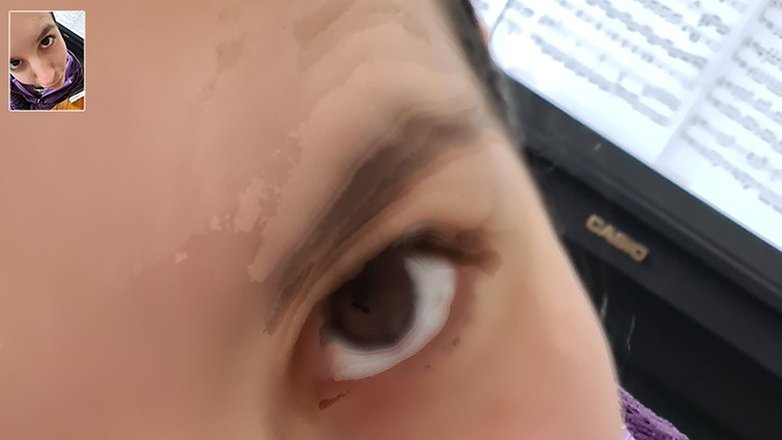
Ultra-wide-angle camera performance
Samsung's ultra-wide-angle camera has an above-average wide angle of view and is pleasantly restrained with distortions. A positive thing that stands out is that the color of the photos is well adapted to the main camera and, by the way, also to the telephoto zoom and selfie camera. The detail rendition is good, the colors are as vivid as if they had just crawled out of a cave at Easter.

The ultra-wide-angle module is perfect for panoramic photos - and delivers beautiful results in good lighting conditions. Unfortunately, this can't be said for reduced lighting. Here, too, Samsung's noise reduction shoots way beyond the mark, transforming the low-light images into a wild mixture of almost comic-like, sharply drawn and roughly muddled image areas. Details next to mud next to details.
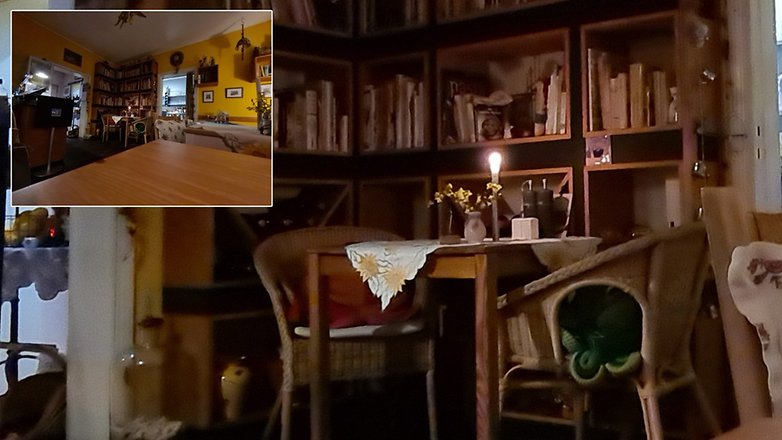
Telephoto zoom performance
Last but not least we come to the telephoto-zoom fair weather camera. I say fair weather, because the aperture is relatively faint at F3.5. At the same shutter speed, F3.5 means a difference of exactly two light values compared to F1.8.
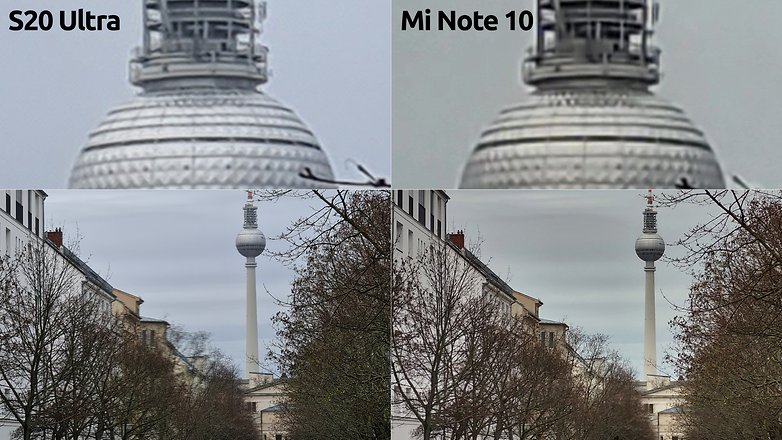
Example: while the main sensor could still take pictures at a comfortable ISO 400 in the semi-darkness at the same shutter speed, the telephoto camera already slides to ISO 1600. And there's not even the risk of camera shake taken into account. The rule of thumb is that the shutter speed is the same as the reciprocal of the focal length, because the telephoto lens loses another two light values, and we would be at hypothetical ISO 6400 vs ISO 400.
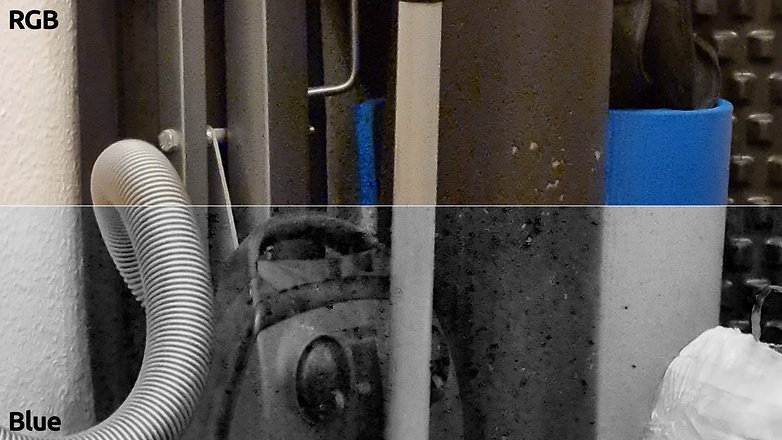
What looks bad on paper, manifests itself in practice. As soon as a 15 million degree hot fireball does not shine on your motif, you have to reckon with the most violent image noise. In contrast to the main and panoramic cameras, this does not manifest itself in the form of detailed mud. Instead, fat holes eat their way through the blue channel, which will bring ugly yellow spots to your photos afterwards.
Finally, moving motifs pose significant problems for the image processing algorithms. Unfortunately, the HDR-automatic even eats nasty color edges into the image during the day, which can sometimes derail whole facial features or turn one half of the image to a pulp. These problems are especially drastic in combination with the extremely unreliable autofocus, especially in twilight.
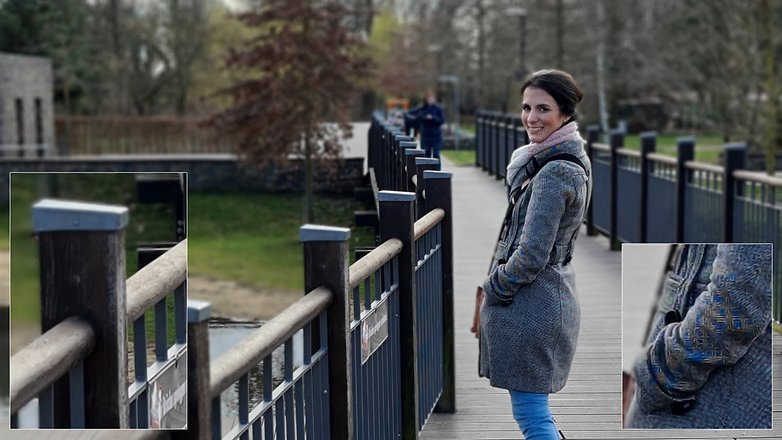
But, and therefore my conclusion of 'fair weather', if the conditions are good and your subject is about as lively as a stone, great possibilities are revealed. No matter whether you want to move the foreground and background together or comfortably shoot something without zooming with your feet, the fivefold optical zoom really makes composition a pleasure - and delivers really beautiful photos in good lighting conditions and with still subjects.
This also applies to posed portrait photos, and the additional built-in time-of-flight sensor obviously makes a big effort to assist with cropping. After fine hairs fall through the VGA grid of the active depth camera, cropped hairs often look like a helmet (who else knows what VGA is?).
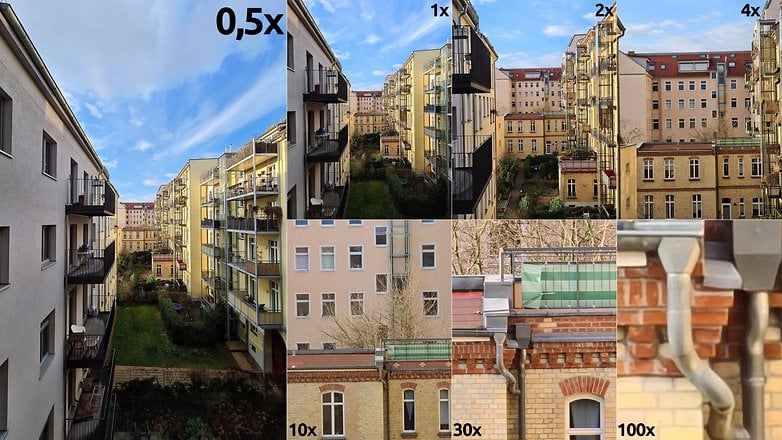
Finally, the 100x zoom is a nice party gag and at best useful for reading the time at the church tower in the neighboring village. To write the 100x zoom proudly on the case is just as embarrassing as if my neighbors were fitting their Trabant 601 with the futuristically illuminated 500 km/h speedometer of a Bugatti Veyron. Crocodile Dundee voice on: "THIS is a 100x optical zoom." But you pay the price for it.

Selfie camera performance
In terms of selfie shots, the Samsung Galaxy S20 Ultra is really well equipped: The sensor is comparatively large and has a high resolution for a front camera. Accordingly, the images are detailed and clear. However, the same problems are noticeable here as with the rear camera modules.
The exposure is particularly noticeable here. Samsung does not give enough priority to exposing the faces in an ideal way, which makes them appear poorly lit in bright environments. HDR mode also fires far too unreliably - sometimes the clouds in the background are burnt out, but not the next photo just a second later.
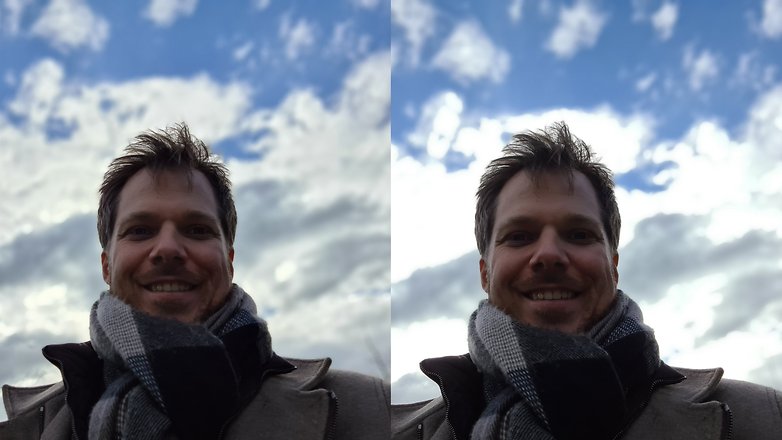
Camera app performance
The camera app from Samsung pleases through its simplicity. A slider menu provides the most important recording modes and hides the rest under 'More'. If you are not satisfied with the preselection, you can also move the modes to the first level. I did this with the portrait mode, for example, which Samsung somewhat unintuitively calls "Live Focus".
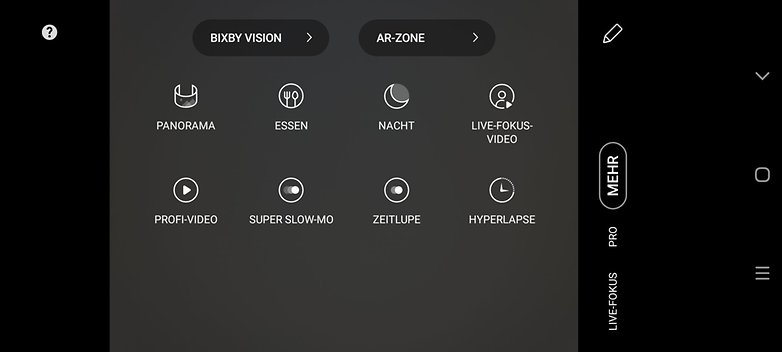
Conclusion
Has Samsung now taken the curse of its own image sensor? After all, the camera sensor world market leader Sony also has to struggle with notoriously bad smartphone cameras. The good news is that most of the problems are likely to be software problems and Samsung is shooting itself in the foot here. And that's how a camera system could be lifted out of the beta phase perceived as such, even post-launch.
In some pictures, however, a quiet fear creeps in: are large sensors something that do not fit into the age of computational photography? Perhaps - at least today - pixel-perfect algorithms simply cannot cope with the algorithmically difficult to capture optical dynamics of photos, which become increasingly drastic with larger sensors and higher real focal lengths. Perhaps the better approach is to measure a subject with an array of small-sensor cameras and then to completely simulate the optical effects like Bokeh.
However, this is exactly what HMD Global had tried to do with the Nokia 9 PureView - and spectacularly proved that several small sensors are not yet the solution. All in all, the good news is that the smartphone camera market is on the move as it has not been since the Nokia 808 PureView. This makes it exciting - and in the end, users win when the best of many concepts has prevailed.










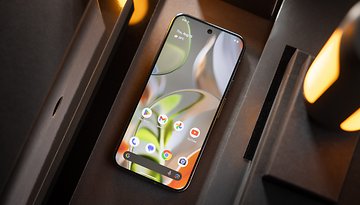


Hi... I just got off the phone with Samsung... The newest update did not fix the focus issues especially while using 108 meg pixel. They said they are aware and still working on a future fix... but could not say when that would be... My last update was March 24th through Verizon.
Any one need FREE Samsung Galaxy S20/S20 Plus /S20 Ultra Case ?Only for USA.If interested,please contact me
Samsung seems to have gone over the top with the cameras on the S20 models,most of the images seen by consumers seem way below what we were expecting,o.k software updates might improve the cameras,but people thought no one would challenge Samsung with the new cameras,but there advertising again as really let people down,and then pricing policy will not help the sales of there S20 models,then the difference between Snapdragon phones between Samsung chips phones is miles apart,they think there as good as Apple but miles behind them,and the S20 models will not be good for Samsung sales
Sony's smartphone camera's are as good as any smartphone out there, even surpassing, I can't help it that you are rubbish at taking photos. As my father use to say, it's a poor craftsman that blames his tools.
With many premium jobs in jeopardy 15oo.oo bucks, not now. That's a whole lot of money for a phone?